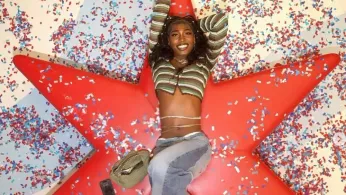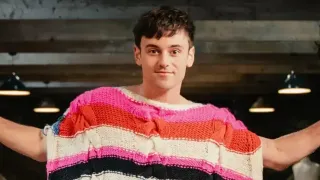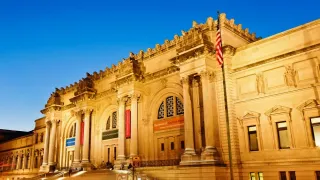
4 hours ago
Vogue as Liberation: Chicago’s Ballroom Scene and the Art of Queer Self-Expression
READ TIME: 4 MIN.
On Chicago’s West Side, in a modest event space pulsing with music and anticipation, dozens of young people gather—some teens, others in their thirties. Folding fans snap open, sequined jackets glimmer, and the air buzzes with the unmistakable energy of a ball. Here, the underground ballroom scene—born of Black and Latino queer and transgender communities—is not just surviving; it’s thriving, offering a safe, affirming space for LGBTQ+ youth and adults to celebrate their identities through dance, fashion, and kinship. At the heart of this movement is Skai Underwood, a transgender woman and vogue coach whose story and style exemplify the transformative power of ballroom culture.
Skai Underwood’s journey began as a young person seeking acceptance and understanding. She encountered the ballroom scene through TaskForce, an organization supporting LGBTQ+ youth. First a participant, now a leader and coach, Underwood has spent nearly a decade fostering a space where identity is not only accepted but affirmed. “I used to battle with my identity,” Underwood recalls. “Then I came here and saw there’s so many people who look like me and act like me. I wanted to be as free as them and not have a care in the world and go with my head held high and say, ‘This is me, this is who I am.’”
Her work centers on the art of voguing—a dance form born in Black and Brown queer nightlife spaces as early as the 1960s. Voguing is more than movement; it’s a living archive of queer history, echoing the poses of vintage magazines and referencing early drag pageants. Underwood’s classes at TEXTURED Dance Studio in Uptown bring together individuals seeking not only dance skills but also affirmation and connection.
Ballroom fashion draws its strength from a rich tapestry of influences. Houses such as the Kiki House of Juicy Couture borrow their names from luxury designers—a practice that both honors and reclaims the runway for queer and transgender people who have historically been excluded from high fashion. Each house is a chosen family, united not only by artistry but also by shared values and support. Competitions at balls feature categories like Runway, Vogue Femme, and Realness, where style is both a weapon and a shield—a means of survival, self-expression, and celebration.
Underwood’s style is unmistakable: bold makeup, dramatic silhouettes, and a fearless embrace of color and texture. Her aesthetic draws from ballroom’s avant-garde tradition, blending elements of high fashion with street wear, and always foregrounding individuality. The creative risks taken by ballroom participants—whether through costume, choreography, or persona—have influenced not only underground scenes but also mainstream fashion, as designers such as Thierry Mugler and Jean Paul Gaultier have acknowledged their debt to ballroom’s boldness and gender-fluid styling.
But in Chicago’s scene, the focus remains on community impact. “These spaces are not just safe for our young people, they are affirming spaces, right?” says Balthazar, a ballroom organizer. “We affirm their identity and we celebrate their culture and the things that are important to them.”
Ballroom culture is revolutionary by design. Its pageantry, music, and dance are forms of resistance, crafted in response to exclusion and marginalization. The scene serves as an incubator for new aesthetics and as a platform for social advocacy. In Chicago, the ballroom community is smaller than its New York counterpart, but its influence is profound—shaping not only local fashion and dance but also the lives of those who participate.
For Underwood and her peers, ballroom is more than performance—it is liberation. Through the act of voguing, participants assert their identities, tell their stories, and challenge societal norms. The House system provides mentorship, emotional support, and a sense of belonging. Competitions are moments of joy, artistry, and affirmation, where prizes and trophies are secondary to the experience of being seen and celebrated.
Recent documentaries and exhibitions—such as “Deep in Vogue” at Kunsthal Rotterdam—have brought renewed attention to ballroom’s cultural significance, highlighting its role in shaping global conversations about gender, race, and art. But in Chicago, the movement is local and deeply personal, rooted in the relationships and artistry of people like Underwood.
As ballroom continues to evolve, its impact radiates outward—informing fashion, performance art, and youth advocacy far beyond the ballroom floor. Underwood’s work as a vogue coach and mentor ensures that the next generation of queer and transgender creatives has access to the tools, connections, and affirmation they need to thrive. In spaces where joy and artistry meet resilience and resistance, ballroom is not just a scene; it is a movement, a family, and a vision of liberation.
The story of Chicago’s ballroom scene—and the standout figure of Skai Underwood—reminds us that queer identity is not a trend, but a living, breathing force in art and fashion. Through the language of dance, the spectacle of fashion, and the strength of chosen family, ballroom culture is helping shape a future where every LGBTQ+ person can walk, vogue, and live with their head held high.






